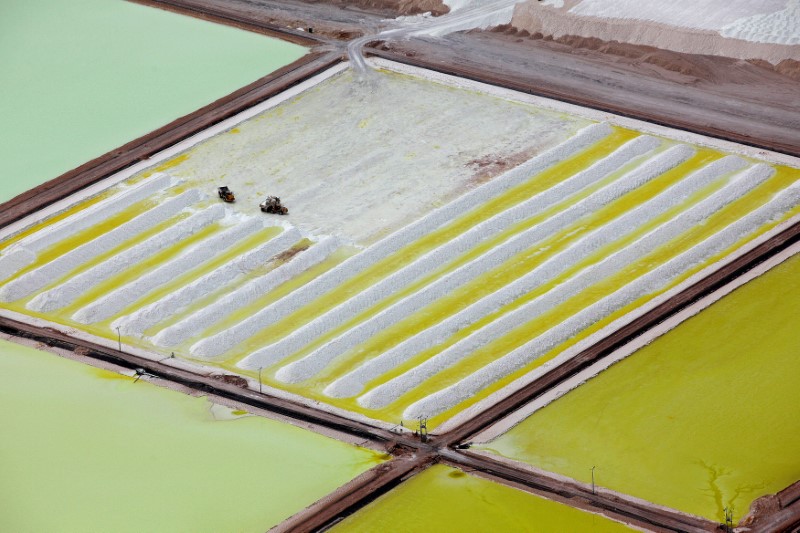Maximus Resources Ltd (ASX:MXR, OTC:MXRRF) has set the reverse circulation drill spinning at the Bird Rock and Kandui lithium prospects near Kambalda in Western Australia as part of the Lefroy Lithium Joint Venture (JV) with Korea Mine Rehabilitation and Mineral Resources Corporation (KOMIR).
The 14-hole RC drill program for around 1,500 metres will include maiden drilling of nine holes for about 700 metres testing recently discovered spodumene-bearing pegmatites at the Bird Rock prospect.
It also includes five holes for about 800 metres at the advanced Kandui prospect for a third phase to assess the continuity of mineralisation, following updated geological modelling, with the opportunity to expand if required.
The program is expected to be completed within two weeks, with assay results expected in 3-6 weeks following sample submission.
About Lefroy Project
Lefroy is on granted mining tenements in Western Australia’s highly prospective Eastern Goldfields Lithium-Caesium-Tantalum (LCT) Province, near Mineral Resources’ Mt Marion Lithium mine and processing facilities.
On receipt of final Lefroy soil geochemical results, Maximus completed an initial ground reconnaissance of several areas with elevated lithium-in-soil.
This led to the discovery of previously unidentified pegmatite with coarse spodumene crystals up to 20cm in length under shallow cover at Bird Rock.
Work at Bird Rock
Due to soil cover, the pegmatite at Bird Rock is not prominently exposed at the surface, which is why it has remained undetected and highlights the importance of detailed soil geochemistry mapping.
Subsequently, the company completed infill soil sampling prior to drill testing to further refine the drill target.
The 9-hole maiden drill program is designed to first understand the sub-cropping pegmatite dip and direction, which remains unknown, and if successful, additional step-out drilling will be undertaken.
Kandui more advanced
At Kandui, initial wide-spaced drilling intersected several stacked shallow dipping spodumene-dominant pegmatites across a wide area of about 2 kilometres x 1.5 kilometres.
Second phase drilling intersected multiple shallow-dipping pegmatites, with variable thickness up to ~18 metres.
The Kandui pegmatites have been confirmed to be fertile, exhibiting elevated levels of lithium, tantalum and caesium, indicating highly fractionated zones with concentrations of spodumene mineralisation.
Despite lithium grades and intervals being below initial expectations, the second-phase drilling uncovered a very large area with significant spodumene-bearing pegmatites.
The results confirmed the geological model's accuracy and demonstrated the potential for discovering thicker, high-grade zones within the Kandui prospect.
Previous intersections included:
- 6 metres at 1.11% Li2O including 3 metres at 1.99% from 91 metres;
- 5 metres at 1.11% Li2O from 111 metres including 3 metres at 1.72%;
- 5 metres at 0.77% Li2O from 59 metres including 3 metres at 1.18%;
- 12 metres at 0.39% Li2O from 78 metres including 2 metres at 0.87% and 3 metres at 0.65%; and
- 18 metres at 0.24% Li2O from 116 metres, including 2 metres at 0.50%.
Third-phase work
Third-phase drilling is being undertaken following refinement of the company’s geological modelling, which has highlighted several areas that require further drill testing.
Several holes that returned anomalous lithium grades, such as 58 metres at 0.11% Li2O in the maiden drill program are also being targeted in this third-phase drilling.
Given the limited drilling in the area, and observed fertility of the pegmatites, Kandui remains a high-priority target with all pegmatites open in all directions.
About the JV
On receipt of the drill results the company will finalise the annual report for the Lefroy Lithium JV with a site visit by KOMIR planned in October.
Under the JV, KOMIR is to fund US$3 million (~A$4.8 million) on lithium exploration activities to earn 30% interest in lithium mineral rights across the Lefroy tenements.
KOMIR must fund a minimum of US$1 million (~A$1.6 million) on lithium exploration under the JV in the first 12 months. If KOMIR withdraws from the JV, all lithium mineral rights return to Maximus.
